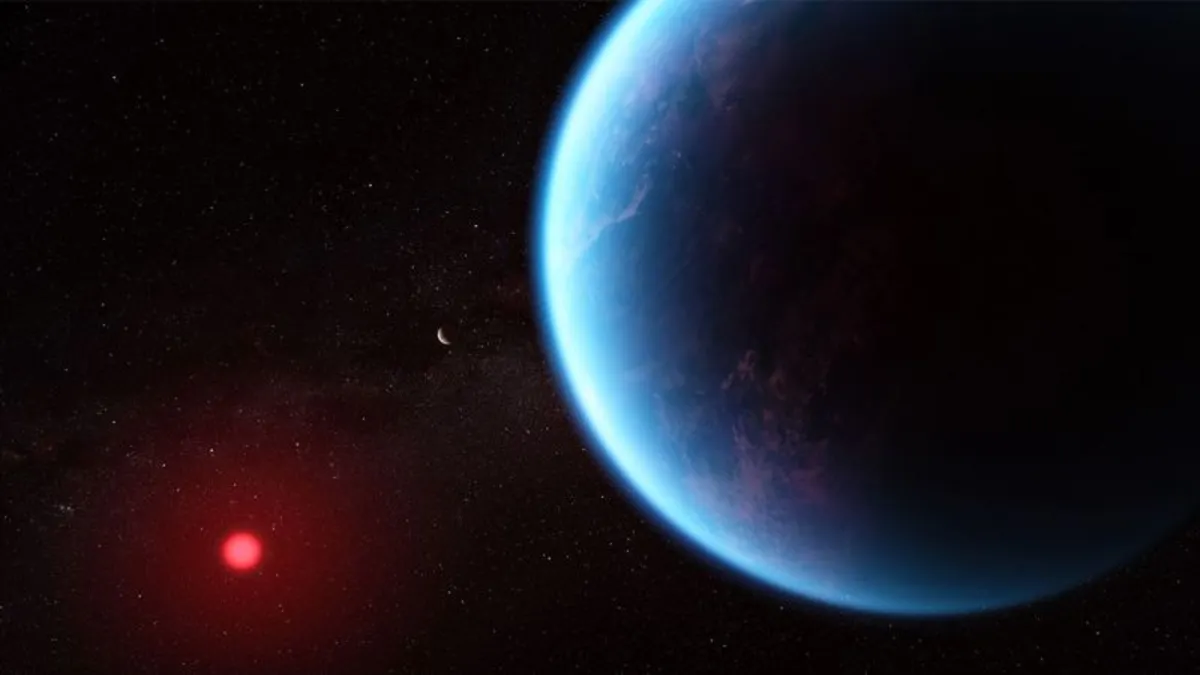
Sign up for CNN’s Wonder Theory science newsletter and embark on a journey through the universe, uncovering fascinating discoveries and scientific advancements. Recently, astronomers made a groundbreaking detection of two molecules in the atmosphere of a distant exoplanet known as K2-18b. This discovery hinted at the possibility of extraterrestrial life, as these molecules—dimethyl sulfide (DMS) and dimethyl disulfide (DMDS)—are typically produced by living organisms on Earth. The initial findings sparked excitement across the scientific community, suggesting the most promising evidence of a biosignature yet.
However, the enthusiasm was tempered shortly after as new findings emerged, prompting scientists to urge caution in the interpretation of these results. Dr. Luis Welbanks, a postdoctoral researcher at Arizona State University, expressed skepticism about the strength of the statistical evidence linking the detected molecules to biological activity. He noted that while DMS and DMDS are often associated with microbial life, they can also be formed through abiotic processes, meaning the search for definitive evidence of life on K2-18b must continue.
Three independent research teams, including Welbanks' group, have scrutinized the original models and data from the April study, yielding contrasting results that have been submitted for peer review. Meanwhile, Nikku Madhusudhan, the lead author of the original research, and his colleagues have conducted further analyses to bolster their earlier claims about the presence of these potential biosignatures on K2-18b. This ongoing dialogue among scientists exemplifies the complex nature of the search for extraterrestrial life.
K2-18b, located 124 light-years from Earth, is considered an ideal candidate for the search for life beyond our solar system. It is classified as a Hycean world, characterized by a hydrogen-rich atmosphere and vast oceans of liquid water. Madhusudhan's team capitalized on observations from the James Webb Space Telescope to explore the planet's atmosphere further, but their findings have not gone unchallenged.
Scientists Dr. Rafael Luque and Michael Zhang from the University of Chicago identified potential issues with the April study's data, citing "noisy" observations that could distort findings. Noise, caused by imperfections in telescope data and the complexities of detecting specific gases in exoplanet atmospheres, poses significant challenges. Zhang explained that distinguishing between organic molecules becomes increasingly difficult when data quality is subpar, leading to uncertainties in identifying DMS.
Further analysis revealed a concerning temperature discrepancy in K2-18b's atmosphere. The perceived temperature skyrocketed from approximately 250 Kelvin to 422 Kelvin in the April study. Such high temperatures raise questions about the planet's potential for habitability, as cooler temperatures at the atmosphere's upper layers may not reflect the true conditions on the planet's surface.
Welbanks and his colleagues also identified fundamental flaws in the original research's modeling approach. They argued that the methodology employed by Madhusudhan's team favored a narrow interpretation of the data, allowing for the possibility of other chemical species influencing the observed signals. When Welbanks’ team broadened the model, they found insufficient evidence to support the presence of DMS and DMDS, instead identifying other molecules like ethane, which do not indicate biological activity.
Despite the differing conclusions, Madhusudhan views the ensuing discussions as constructive, acknowledging the need for stronger evidence to confirm the presence of DMS and DMDS. He emphasized that while the original observations reached a three-sigma level of significance, the scientific community typically requires a five-sigma threshold for claims of significant discoveries. Achieving this level of certainty will necessitate repeated detections and rigorous validation of findings using multiple telescopes.
In response to the critiques, Madhusudhan and his team have expanded their search to include 650 different types of molecules, with their findings currently under peer review. They assert that DMS remains a promising candidate, although further observations are essential for a conclusive detection. The scientific discourse surrounding K2-18b highlights the collaborative nature of research in the search for life beyond Earth, with astronomers from various institutions working together to push the boundaries of our understanding.
The ongoing investigation of K2-18b serves as a reminder of the complexities involved in the search for extraterrestrial life. As scientists navigate the challenges of data interpretation and model accuracy, the quest for definitive biosignatures continues. The excitement surrounding K2-18b is not merely about finding life; it represents a significant step in the broader journey of discovery that brings us closer to understanding our place in the universe.